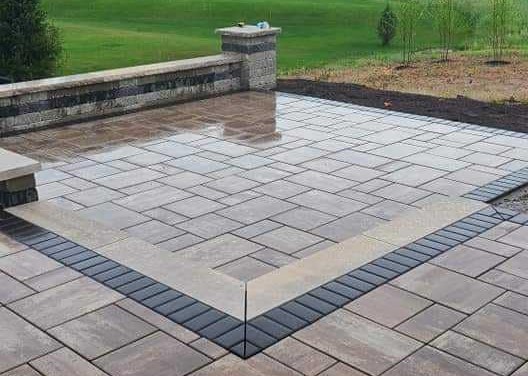
Hardscapes have been added to homes for centuries. Some look to the Hanging Gardens of Babylon (6th century B.C.) as some of the oldest landscaping designs. Ancient Greek and Romans used a lot of hardscaping as well in their cities. Hardscaping was also popular in Japan, where design would focus in gardens by adding paths, walkways, and water features.
Hardscaping didn’t gain huge popularity until the mid 20th century. Outdoor spaces were generally used for livestock and gardens. More recently design is focused on having more leisure space. Now homes are expected to have some hardscaping, even if it is simply just walkways.
What is a Hardscape?
Hardscapes are everything in your landscaping that is built out of hard materials such as stone and concrete, generally the non-living portion of your yard. Patios, walkways, firepits, fireplaces, outdoor kitchens, pool surrounds, constructed water falls are all examples of hardscapes. Some are more structural such as retaining walls.
Home Value
The value of your home may increase with a well designed hardscape. It can add a luxurious feel to your yard, open up more space for entertaining, and create an appealing ambiance.
Hardscape Maintenance
Hardscapes are easy to maintain, and do not require as much attention as landscaping sometimes needs. Since it isn’t living, it doesn’t require regular watering, it never overgrows anything, and should look the same in spring as it did in fall.
Some maintenance is recommended. You can stain seal your investment to keep it looking new, which also helps prevent sun fading. This only needs to happen every couple years at the most. If you see any pooling water, or sinking, you will want that to be addressed.
Pros and Cons
One of the pros to a paver installation is that maintenance is possible without completely tearing up and replacing the patio. It is also repairable unlike a strickly concrete patio.
Cons include that some hardscapes are not permeable, meaning water has to run off of it instead of through it. Improper design can push the water towards your home or cause other soil erosion. With proper planning and installation, you can avoid these problems, it is even possible to install permeable systems or drains that will keep the water where you want it, and not where you don’t.
